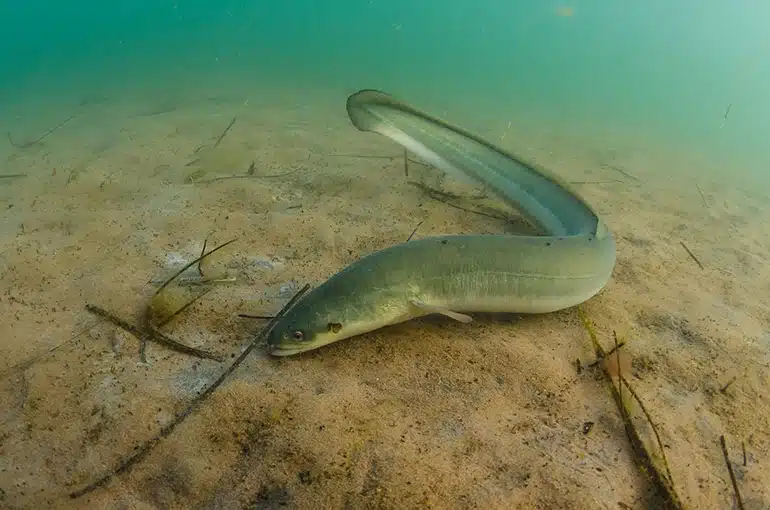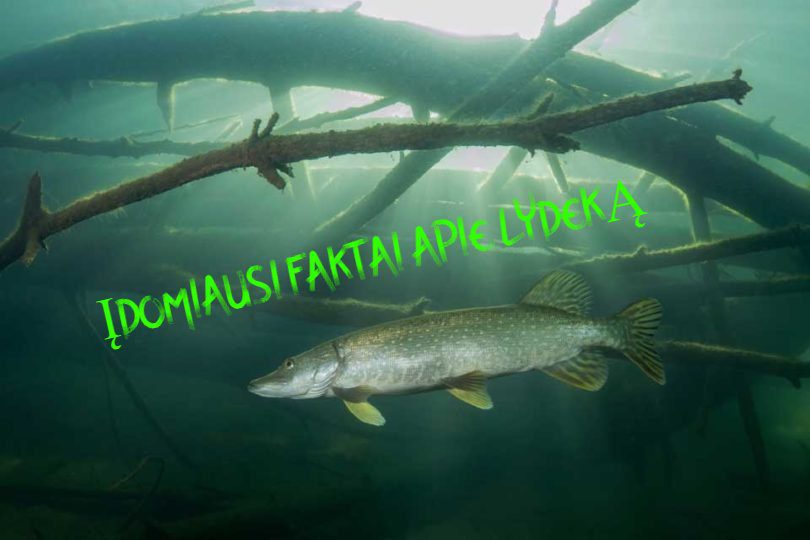Ungurys – kas jis ir ką apie jį žinote ? Tikriausiai atsakysite, kad jis atrodo kaip gyvatė ir yra delikatesas. Tačiau ne viskas taip paprasta – norinčių artimiau pažinti ungurį laukia stulbinantys atradimai. Jie gali keliauti sausuma, net iki kelių kilometrų. Taip pat jų gyvenime yra tam tikras etapas – nerštas, kuris veda į mirtį. Straipsnyje apžvelgsime įdomiausius ir paslaptingiausius faktus iš šių nuostabių būtybių.
Šiek tiek ungurio istorijos
Ungurys atsirado daugiau nei prieš 50 milijonų metų. Tada jie buvo suskirstyti į 4 gentis, 20 šeimų, 111 rūšių ir apie 800 porūšių. Kaip ir visi povandeniniai gyventojai, jie yra suskirstyti į skirtingas mokslines klasifikacijas. Viena iš labiausiai paplitusių rūšių yra porūšis, vadinamas Anguilliformes (upynė rūšis Anguillanguilla). Šios žuvys priskiriamos kauliniams stuburiniams gyvūnams. Jiems priklauso visos populiarios šeimos, tokios kaip: murenos, spaghetti eel, amerikietiški, europietiški ir kt.
Jie neršia vandenyne ir migruoja į gėlą vandenį. Šis judėjimas yra laikinas – jie išlieka jūrinio pobūdžio ir jiems reikia druskingumo. Sulaukę brandos, jie grįžta į vandenyną veistis.
Didžiausias sugautas ungurys buvo dviejų metrų ilgio ir svėrė 12,7 kg. Dauguma ungurių yra nedidelio dydžio ir svorio. Patelės neviršija vieno metro, o patinai neauga daugiau nei 50 cm. ji laikoma migruojančia žuvimi, kaip ir lašiša, tačiau išskirtinė tuo, kad ungurys gyvena gėlame vandenyje o migruoja į vandenyną veistis o lašiša atvirkščiai, gyvena vandenyne o neršti migruoja į gėlas upes. Mokslininkai šią ungurio savybę atrado tik XX a.
Ypatingos žuvies odos apsauginės savybės nusipelno ypatingo dėmesio. Oda yra gana stora ir gausiai padengta skaidriomis gleivėmis. Migruojant už rezervuaro ribų, organizmą dengiančių gleivių kiekis padidėja kelis kartus. Tokios apsauginės funkcijos leidžia unguriui sausumoje įveikti didelius atstumus, taip apsaugodamos žuvis nuo pažeidimų ir išsausėjimo. Be to, šis nuostabus povandeninis gyventojas gali kvėpuoti per odą.
Kur gyvena ungurys
Pagrindinė buveinė yra Vakarų ir Vidurio Europos ežerai bei upės, taip pat pietrytinė ir centrinė Atlanto vandenyno dalys bei visos Europos jūros. Unguriai mieliau renkasi šiltas ir gausiai apaugusias vietas su dumblinu dugnu, nors galima aptikti ir srauniose upėse su akmenuotu dugnu, ypač jei ten randa eroduotų krantų, medžių šaknų ir kitų slėptuvių.
Ungurio gyvenimo būdas
Dauguma rūšių yra naktinės. Kai kurie taip pat gyvena gilesniuose žemyninio šelfo vandenyse ir giliuose šlaituose iki 4000 m. Tik Anguilijos atstovai nuolat gyvena gėlame vandenyje, bet grįžta į jūrą veistis. Paprastai gyvena vandenyje, tačiau migracijos laikotarpiu gali judėti ir sausuma, šliaužiodamas apie 3 km/h greičiu šlapia žole ir samanomis padengta dirva. Tai ilgaamžė žuvis – gali gyventi iki 85 metų.
Ką valgo unguriai
Upinis ungurys valgo tik gyvūninės kilmės maistą. Minta kirmėlėmis, mailiumi, sraigėmis, varlėis, vabzdžių lervomis, buožgalvius ir kitų žuvų ikrus. Baltijos ungurys mėgsta šprotus ir kitas smulkias žuvis. Taip pat minta kuojų jaunikliais, ešeriais. Jis maitinasi tik šiltuoju metų laiku. Prasidėjus šalnoms, nustoja ėsti iki pavasario.
Kaip dauginasi unguriai
Ungurių nerštas vyksta Sargaso jūroje, už kelių tūkstančių kilometrų nuo jų nuolatinių buveinių. Ikrai dedami apie 400 m gylyje. Pasibaigus neršto laikotarpiui, lytiškai subrendusios žuvys žūva.
Ungurių dauginimosi procesas ištirtas gana menkai, nes natūraliomis sąlygomis neįmanoma stebėti visų jo etapų. Sunkumai yra susiję su dideliu gyliu nerštavietėse. Tik žinoma, kad nerštas praeina maždaug 15 laipsnių vandens temperatūroje. Suaugusi apie 3 kg sverianti patelė gali dėti apie pusę milijono kiaušinėlių, kurių kiekvienas yra 1–1,5 mm dydžio. Yra 3 ungurinių žuvų vystymosi etapai:
- lerva
- „stiklo” forma
- suaugęs ungurys
Pirmajame etape žuvis turi pailgą lapų formą kūną, apie 8 mm ilgio. Ant visiškai skaidraus, plokščio kūno mažytės akys vos matomos. Pirmosiomis gyvenimo savaitėmis lerva nė iš tolo neprimena suaugusio plėšrūno, todėl ilgą laiką buvo laikoma atskira rūšimi. Maždaug po mėnesio jis pasiekia paviršinius vandens sluoksnius ir, nešamas šiltos Golfo srovės, iškeliauja į Europos krantus. Šis dreifas gali užtrukti iki trejų metų.
„Stiklinės” formos ilgis yra daugiau nei 9 cm. Artėjant žemynui ungurys visiškai nustoja maitintis ir sumažėja 1-2 cm. Jo kūnas vis dar neturi pigmentacijos, bet įgauna serpantino formą. Šioje būsenoje jaunikliai pasiekia į jūrą įtekančias upes. Migruojant prieš srovę žuvis įgauna būdingą tamsią spalvą.
Trečioji stadija – suaugęs ungurys, gyvenantis gėlo vandens telkinyje 10–13 metų. Sulaukęs lytinės brandos ungurys išplaukią į jūrą neršti. Prieš nerštą jo žvynų spalva tamsėja ir įgauna sidabrinį atspalvį.
Kaip gaudyti ungurius
Kadangi ungurys plėšrūnas ir medžioja tamsoje, tai ir žvejoti reikia naktį. Tam naudojama dugninė meškerė. Masalui naudojamį naktiniai sliekai, sliekų krūva arba susmulkintos žuvies gabalėliai. Žvejybai reikėtų rinktis upės duobes į kurias unguriai atplaukia maitintis.












